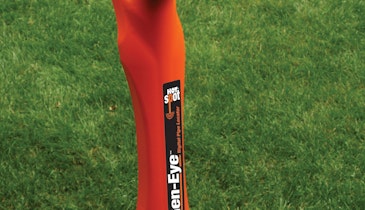Interested in Safety?
Get Safety articles, news and videos right in your inbox! Sign up now.
Safety + Get AlertsThink about when you were a kid competing in an egg relay race at summer camp. You were never so careful about carrying anything as you were holding that raw egg gingerly on a spoon as you lurched toward the finish line.
Now that you’re grown up and making a living operating a vacuum truck or supervising an entire fleet of pumpers, you probably don’t compete in many egg relay races. But doesn’t it stand to reason that you’re probably a safer driver day to day if you imagine you’re always carrying a precarious load down the road?
That’s what the producers of a safety video aimed primarily at drivers hauling big liquid loads believe. They say you’ll gain potentially life- and load-saving advice by viewing the video, “Cargo Tank Driver Rollover Prevention,” produced jointly by the National Tank Truck Carriers and the American Trucking Association in cooperation with the Federal Motor Carrier Safety Administration.
You can see the video at www.fmcsa.dot.gov/rolloverprevention. It’s also free to download and show drivers as part of a safety-training program.
Must-see video
As part of his work with the NTTC, Steve Niswander, vice president of safety policy and regulatory relations for Groendyke Transport Inc., Enid, Oklahoma, envisioned this video for tanker drivers to help reduce dangerous rollovers. Groendyke runs about 1,000 semi-tractors 70 million miles annually, hauling mostly liquid hazardous materials.
Niswander argues the video – part of a national anti-rollover campaign – is a must-see safety tool for drivers who pull trucks with fixed tanks or semi-rigs with tank trailers. Any pumper who hauls an unstable load or a load with a high center of gravity will benefit from the tips shared in the video.
Tips and techniques
The video features several truck drivers who have been involved in rollover crashes, and their stories carry a lot of weight with professional haulers. Interspersed with the compelling driver stories, the video covers four major areas of risk for dangerous rollover accidents: vehicle design and performance, load effects, highway factors, and driver factors.
Using video graphics, the video shows the impact of sudden movements and tripping the wheels over the shoulder when carrying an unstable load. It explains how dangerous liquid slosh and surge can result from driving too fast for conditions, by squaring off the turning radius and by sudden braking or other maneuvers.
It goes on to explain that drivers are ultimately responsible for many of these factors. It stresses that drivers need to do extensive route planning if they’re carrying a load more prone to rollover risk. And the video shares a variety of tips that would be helpful to any hauler:
Know your limitations. Be aware of how loads with a high center of gravity will react when you turn, hit a ramp or execute a braking maneuver. And understand that a full load is actually safer to transport than a partial load. The vast majority of rollover crashes (94 percent) occur in rigs carrying partial liquid loads, as they are more susceptible to extreme sloshing and surging.
Manage your speed. Remember that speed limits and guidelines at curves are meant for general motorists in good weather conditions, not for drivers pulling unstable loads. Fleet experts say truck drivers should maintain a speed at least 10 mph below the posted speed on curves. The faster you go, the more risk you have that a sudden adjustment will cause a rollover.
Maintain your rig and route. Always perform thorough pre-trip inspections to make sure brakes, tires and suspension will operate safely. And before you take the wheel, identify the higher risk sections of your route. As you are able, pinpoint stretches with soft shoulders, downhill grades, limited visibility and twisty turns.
Know these risks well ahead of time so you can slow your reactions and maintain control.
Watch for driver fatigue. It’s always a bad idea to drive when you’re tired, but it’s doubly dangerous when pulling a top-heavy or liquid load. Stay sharp by eating right, stopping frequently to stretch, and getting plenty of sleep. Be mindful of clues that you need to take a break, including daydreaming, frequent yawning, heavy eyelids and head bobbing or drifting from your lane.
Listen to the pro
In the video, 33-year veteran driver G. Wayne Matheson sounds the safety watchword for fellow liquid load haulers.
“Anytime you speed up, you’re subject to mess up,” Matheson warns. “When you get so comfortable and think that you’ve been driving so long and you have so much experience … that it all comes naturally to you, you’re going to mess up. Because something’s going to get you when you’re not expecting it.”





